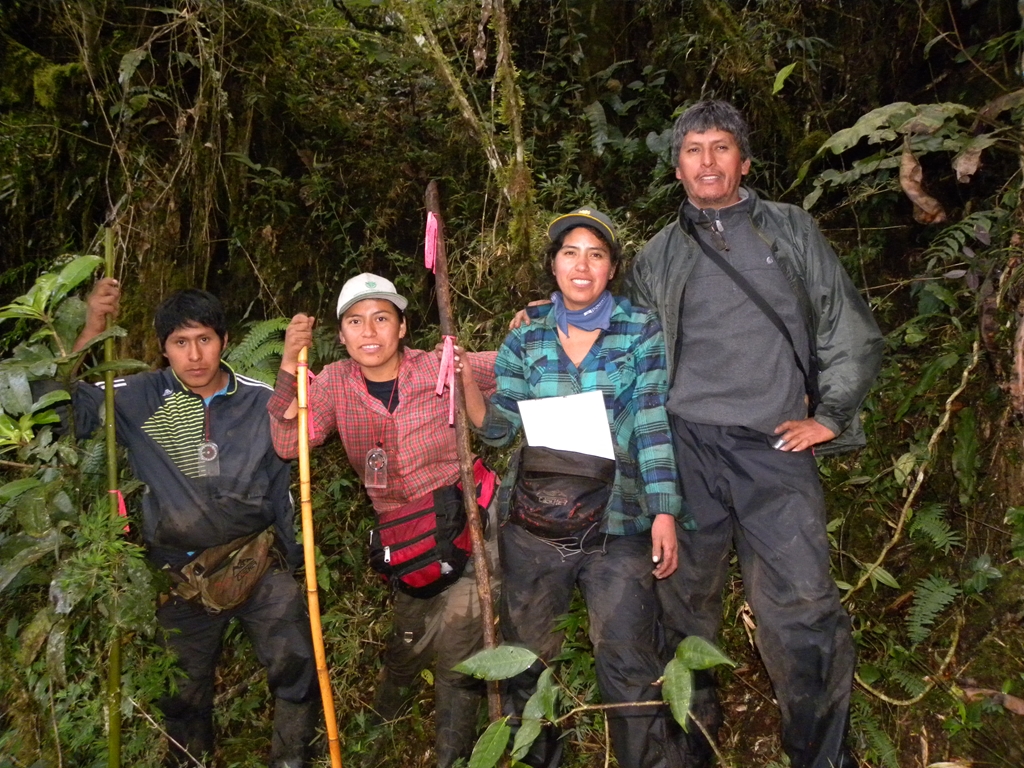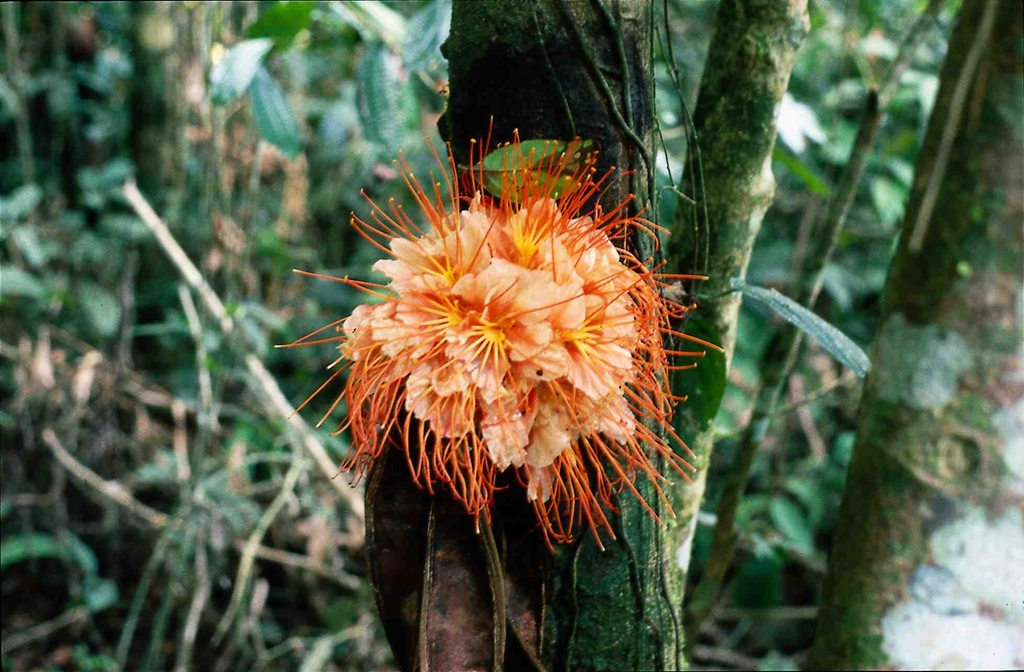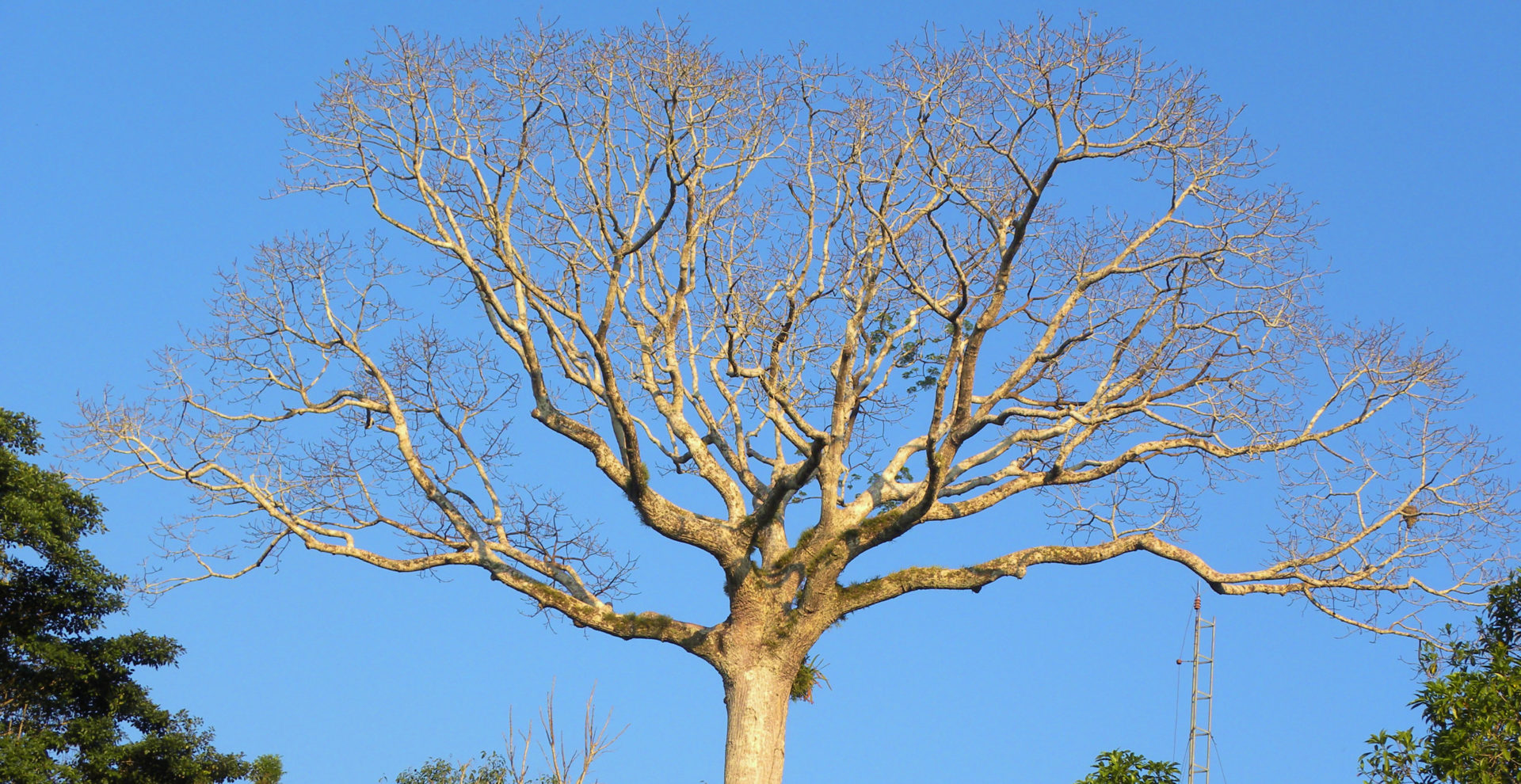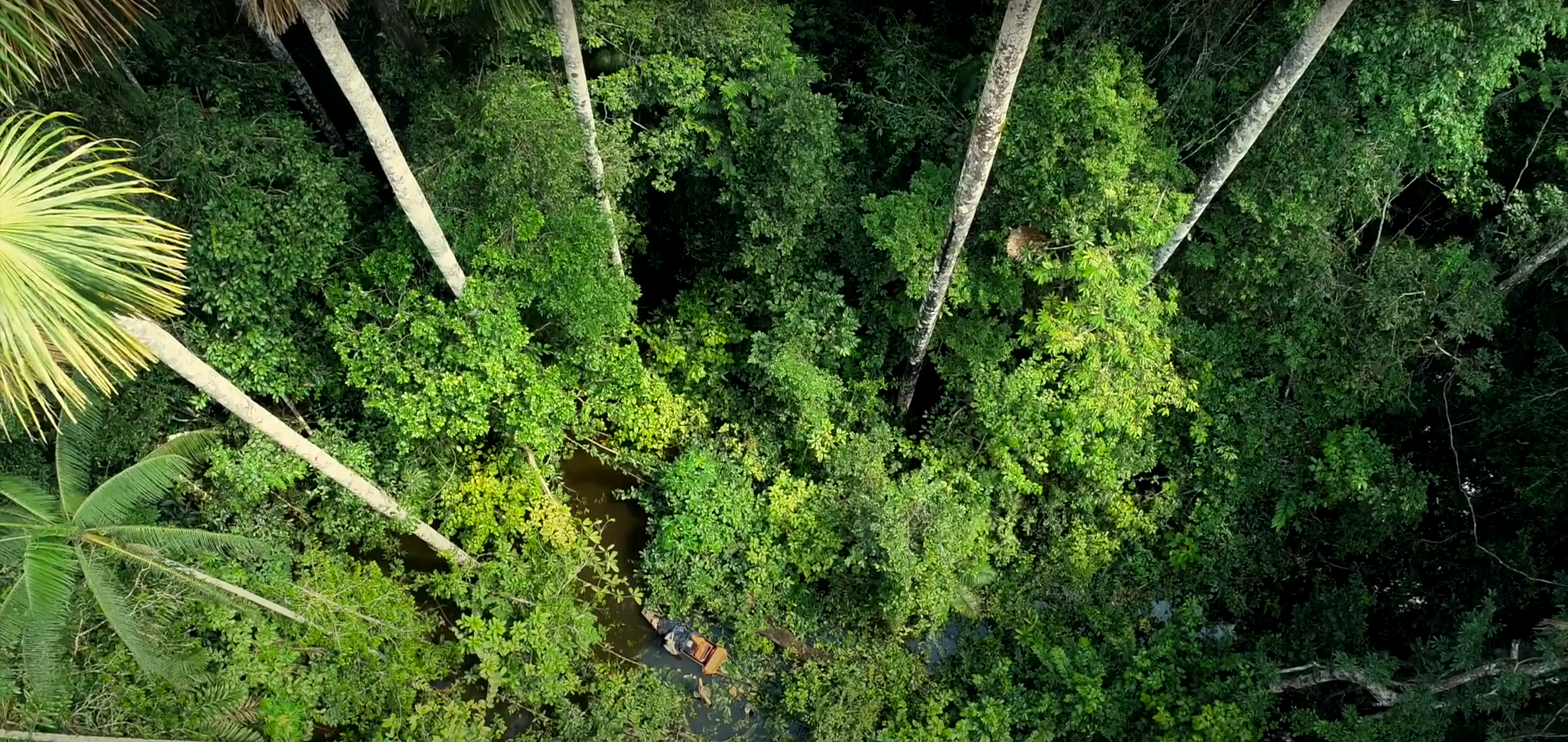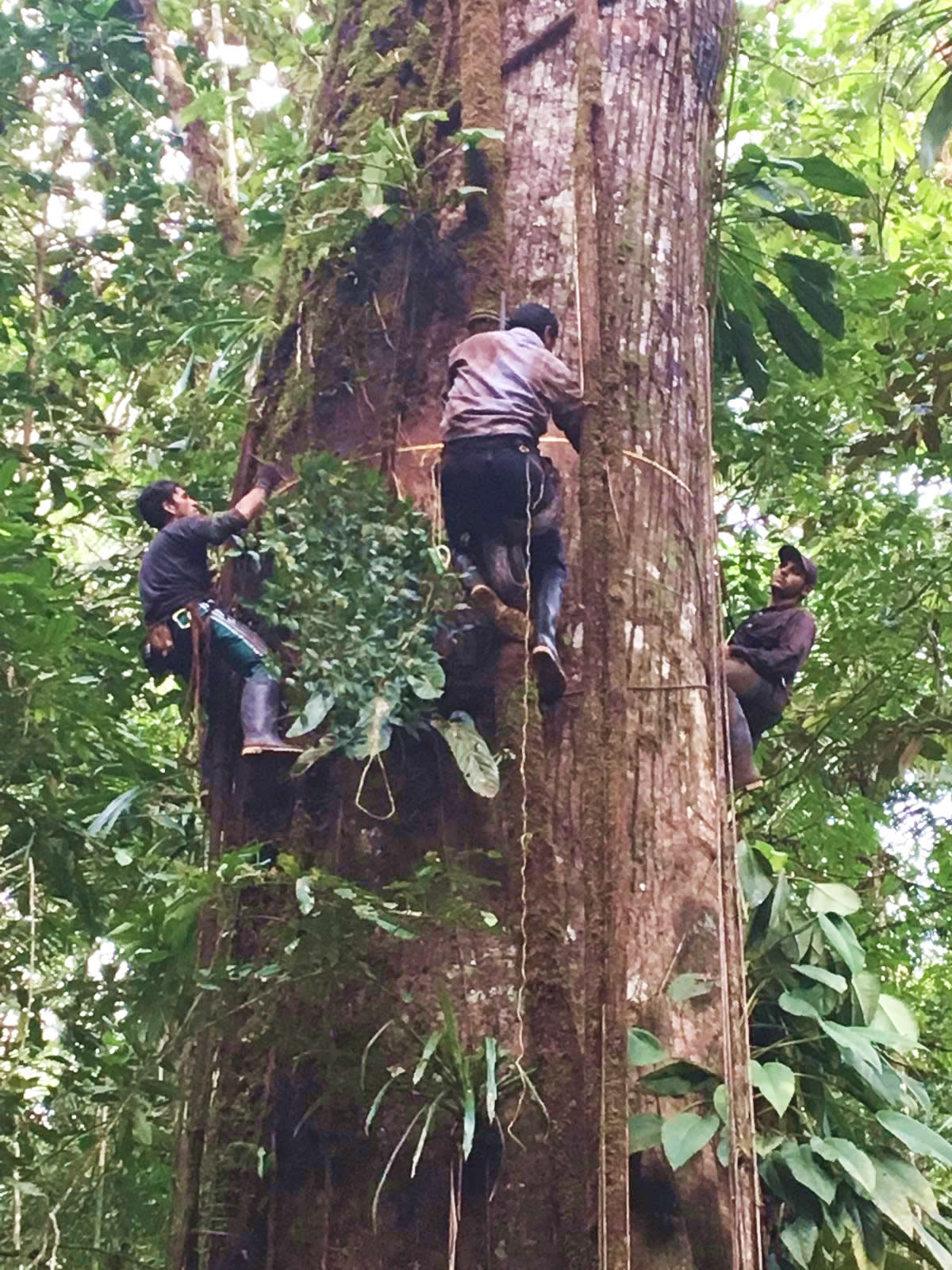-
Ancient peoples shaped the Amazon rainforest
New research reveals that 85 tree species domesticated by pre-Colombian peoples remain common in forests close to ancient settlements. An international team of ecologists and social scientists, including RAINFOR researchers, has found that tree species domesticated and distributed throughout the Amazon basin by indigenous peoples prior to 1492 contributed to modern-day forests. The research, published…
-
Carbon uptake by Amazon forests matches Amazon nations’ carbon emissions
Carbon emissions across all nine Amazon nations have been fully matched by carbon absorption by mature Amazon forests since the 1980s, RAINFOR research shows. Study lead author Professor Oliver Phillips, from the University of Leeds, said: “Since 1980 roughly 430 million tonnes of carbon has been absorbed by pristine Amazon rainforest each year, which is almost…
-
Climate policies alone will not save Earth’s most diverse tropical forests
A focus on policies to conserve tropical forests for their carbon storage value may imperil some of the world’s most biologically rich tropical forests. Many countries have climate-protection policies designed to conserve tropical forests to keep their carbon locked up in trees. But a new study suggests these policies could miss some of the most…
-
Evolutionary heritage influences Amazon tree ecology
It is expected that sister lineages will be more similar to each other simply because they diverged more recently from a common ancestor. However, during evolution many other processes have been acting and driving to different extents of similarity among closely related lineages. So, rather than being purely assumed, the tendency of sister lineages having more…
-
Drought stalls tree growth and shuts down Amazon carbon sink
A recent drought completely shut down the Amazon Basin’s carbon sink, by killing trees and slowing their growth, a ground-breaking study led by researchers at the Universities of Exeter and Leeds has found. Previous research has suggested that the Amazon –the most extensive tropical forest on Earth and one of the “green lungs” of…
-
Massive analysis of thousands of Amazon tree species: most are restricted to the wettest locations and are vulnerable to droughts
A study in Ecography used information of the distribution and abundance of 2570 Amazon tree species across RAINFOR and ATDN plots to calculate the most favourable climate condition for each of them. Led by Adriane Esquivel Muelbert, a Brazilian PhD student at Leeds University, the team of 82 scientists discovered that most species are clearly restricted to…
-
PPBio-RAINFOR and Dry Forest workshops in Data management and Analysis with ForestPlots.net, Brazil
In April, Gabriela Lopez-Gonzalez (ForestPlots.net / RAINFOR) co-ordinated the content and taught 2 workshops in Brazil in the management and analysis of tropical forest data. Attendees were taught how to use ForestPlots.net to load, analyse and manage information for long term monitoring plots, and share best practices in analysis and use of data. The first…
-
Half of all Amazonian tree species may be globally threatened
More than half of all tree species in the world’s most diverse forest – the Amazon – may be globally threatened, according to a new study. But the study, published in the journal Science Advances, also suggests that Amazonian parks, reserves and indigenous territories will protect most of the threatened species, if properly managed. The…
-
RAINFOR signs new cooperation agreement with SERNANP (Peru)
On 16 October, Tim Baker signed a cooperation agreement on behalf of RAINFOR (Amazon Forestry Inventory Network) with the Protected Areas Authority in Peru (SERNANP) to monitor the impact of climate change on the nation’s forests (see here). The first activity as part of this agreement will be training of SERNANP staff in methods of permanent…
-
Training RAINFOR – Excellence in data collection
This course was held on the 9th and 10th of September 2015, in the Bacaba Park, New Xavantina, Mato Grosso, in Brazil with the main objective to train future partners of The Amazon Forest Inventory Network (RAINFOR) in the demarcation of permanent plots. The course was coordinated by Prof. Beatriz Schwantes Marimon and taught by team members of the Plant Ecology…
-
One percent of tree species in the Amazon forest account for half of its carbon
Amazon rain forests are the world’s most extensive and are extraordinarily diverse, being home to an estimated 16,000 tree species. Yet a new study has discovered that fewer than 200 species of these, barely 1%, are responsible for half of all tree growth and carbon stored in the Amazon. The study led by RAINFOR, also shows that the…
-
New data package release
The latest data package released from ForestPlots.net makes available tree-by-tree diameter and floristic data from 91 samples of 0.1-ha each, in community and protected lands in eastern Madre de Dios, in Amazonian Peru. Data were collected by a team of Peruvian botanists and assistants, in a collaboration between the University of Leeds, the Universidad Nacional San Antonio Abad…
-
In the news: 30 years of Amazon forest change
Our analysis of 30 years of Amazon forest carbon dynamics, which was published last month in Nature, received widespread attention. A big thank you to many RAINFOR colleagues for making this study possible. We discovered that the capacity of Amazonian forests to sequester carbon has weakened, with potentially important implications for climate change. Using on-the-ground measurements from…
-
Problems and solutions in a changing climate-Interview with Oliver Phillips
Oliver Phillips was recently interviewed by the Columbian newspaper El Colombiano de Medellin about RAINFOR. The full article is available below.
-
Update your participant details in ForestPlots.net
The latest release of ForestPlots.net, available since yesterday, lets you review and update your contact details and institutional affiliations. If you have been involved in any RAINFOR field campaigns, it is important that you register as a user, and ensure that your user account is linked to your participant details. These details should be kept up to date;…
-
The impact of forest plots research is of ‘outstanding reach and significance’
In 2014 the regular assessment of the quality of research at UK universities – the Research Assessment Exercise, or REF -evaluated for the first time the impact of research on policy and society. In Leeds we wrote a case study that described the many ways in which the work of RAINFOR, AfriTRON and ForestPlots.net has…
-
Three decades of Amazon forest change
As we describe in research published this month (Brienen et al. Nature 519, 344–348), the biomass dynamics of apparently intact forests of the Amazon have been changing for decades with important consequences. RAINFOR’s partners and other researchers have been taking a close-up look at Amazon forests since the 1980s, tracking the lives of hundreds of thousands of…
-
New ForestPlots.net User Interface now live!
We have been working on improving the ForestPlots.net interface . We hope you like the new version. The instruction to re-activate your account are as follows: 1. On the page https://secure.forestplots.net/forgotten-password click on the » Forgotten Password» 2. Enter your email address and click the «Submit » button 3. a message that will be sent the information to update your…
-
ForestPlots.net: now able to assign D.O.I s to datasets
ForestPlots.net, the secure online database used to manage most of RAINFOR’s long-term data, is now able to assign Digital Object Identifiers (DOIs) to datasets. DOIs provide a system for tracking where the data came from, citing it in publications and providing the data collectors with acknowledgment for their work. ForestPlots.net has been used as a case study for DataCite and…
-
New research shows that Borneo’s productive trees play a vital role in global carbon cycling
Super-charged tropical trees: Borneo’s productive trees vitally important for global carbon cycling A team of scientists has found that the woody growth of forests in north Borneo is half as great again as in the most productive forests of north-west Amazonia, an average difference of 3.2 tons of wood per hectare per year. The new…

